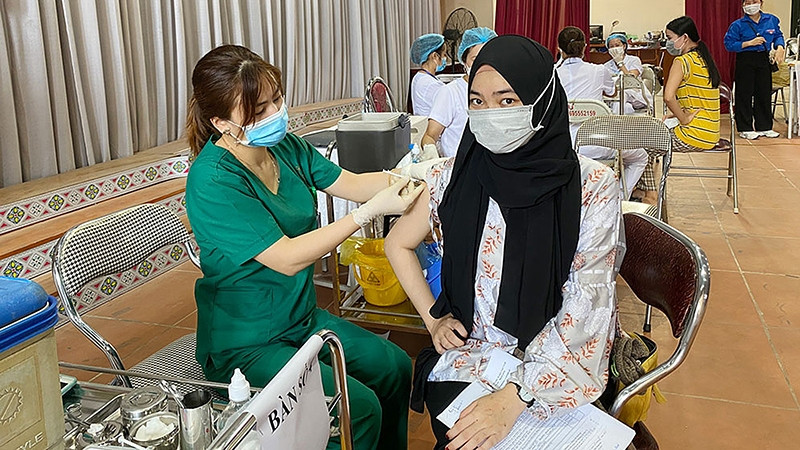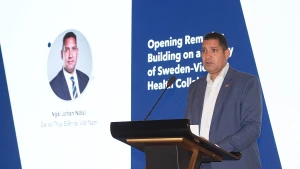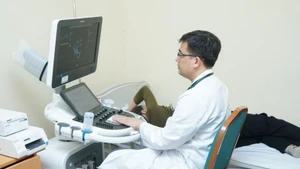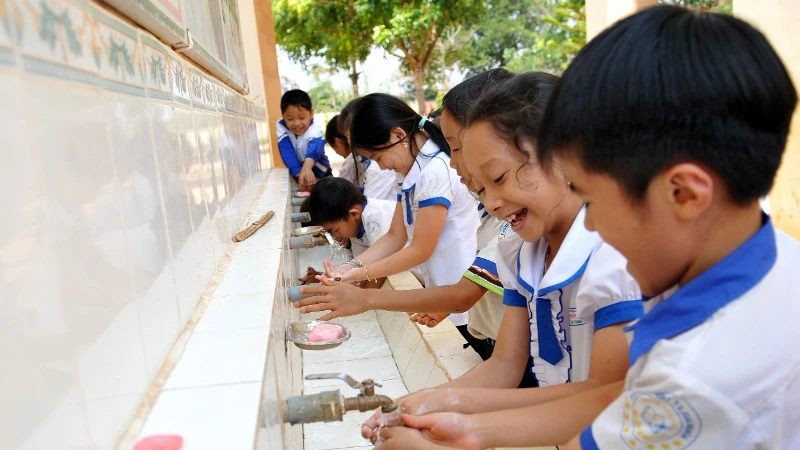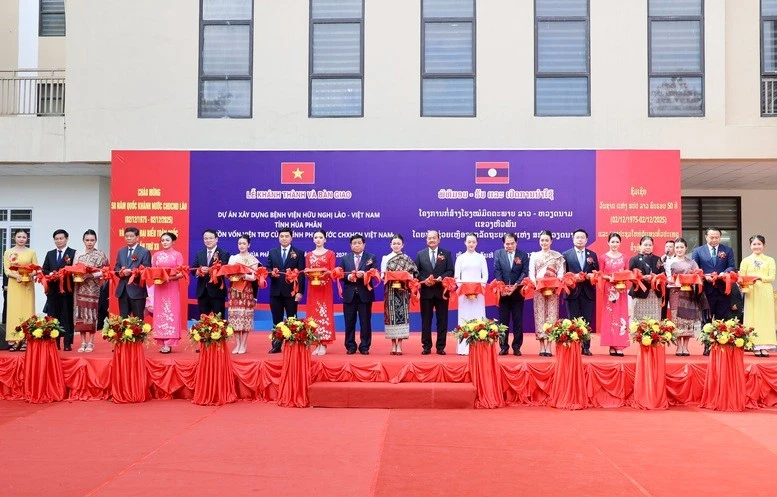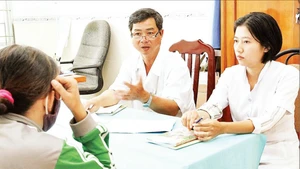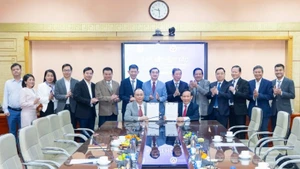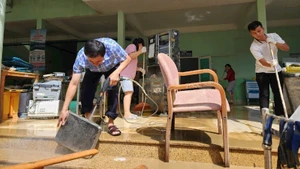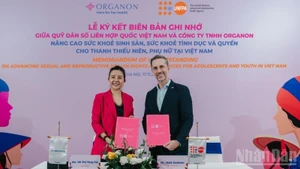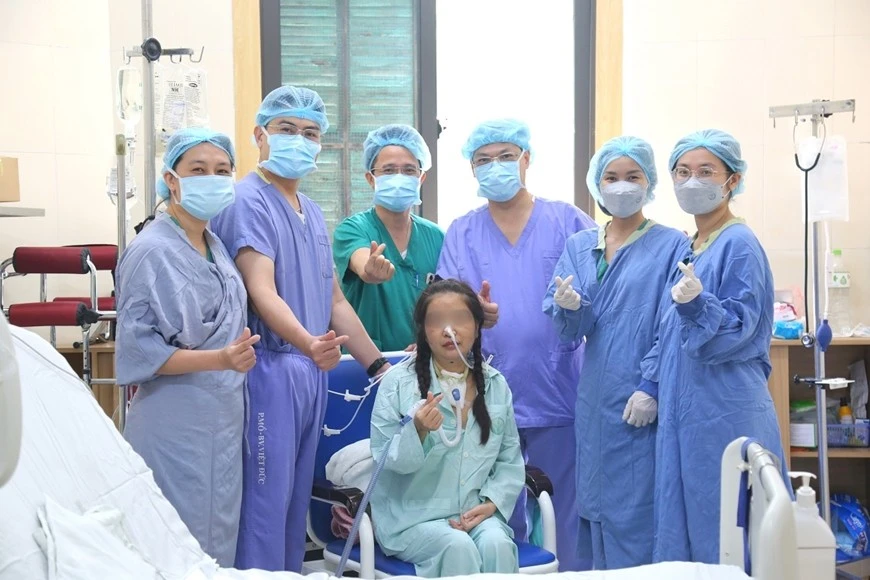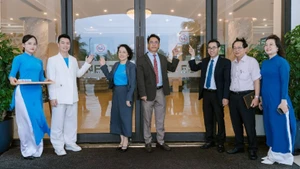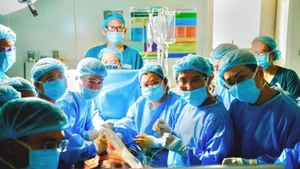>>> PM asks for strengthened measures against COVID-19
>>> Health Ministry receives 1.2 million more doses of AstraZeneca vaccine
>>> Hanoi and Ho Chi Minh City tighten social distancing measures
The packaging of this vaccine includes trays containing 25 vials each, with each vial holding six doses.
On August 22, 1,209,400 doses of AstraZeneca COVID-19 vaccine were officially handed over by Vietnam Vaccine Joint Stock Company (VNVC) to the Pasteur Institute in Ho Chi Minh City.
Having just been brought to Vietnam on the morning of August 19, this is the 9th batch of vaccines under VNVC's pre-order contract with AstraZeneca.
The MOH has ordered the health departments of provinces and cities, hospitals under the Ministries of Health, Public Security and National Defence, and the health unit under the relevant other ministries and sectors to prioritise vaccination for pregnant women and lactating mothers.
The ministry also informed that currently, the total capacity and supply of oxygen across the country is about 1,200 tonnes of liquid oxygen per day. It has requested medical oxygen manufacturers and suppliers to strengthen their capacity and be ready to meet the new requirements for oxygen supply and treatment of COVID-19 patients amid the epidemic tends to be complicated.
On the afternoon of August 22, Deputy Prime Minister Vu Duc Dam, Head of the National Steering Committee for COVID-19 Prevention and Control, inspected the preparation work in the city before tightening the implementation of Directive 16 (from 0:00 on August 23) under the direction of the Prime Minister.
Dam affirmed the necessity to strictly control those who are allowed to go out right at each family and residential cluster during this strengthened social distancing period.
He urged the city’ leaders to strictly implement strengthened social distancing and other drastic measures to prevent and control the Covid-19 epidemic, so that the city can achieve its goal of bringing the pandemic under control by September 15.
Deputy Health Minister Nguyen Truong Son said that the first round of mass testing across HCM City will end on August 25, followed by a redraw of the zoning map according to the level of risk for periodical testing in each zone.
The move follows the PM’s urgent telegraph on August 22, urging HCM City to hasten social distancing and other anti-COVID-19 measures, including the quick mass COVID-19 testing in HCM City and the three provinces of Binh Duong, Dong Nai and Long An, with HCM City alone to test the entire city during the strengthened social distancing period in order to detect infection cases (F0s) as soon as possible and promptly prevent the spread of the disease.
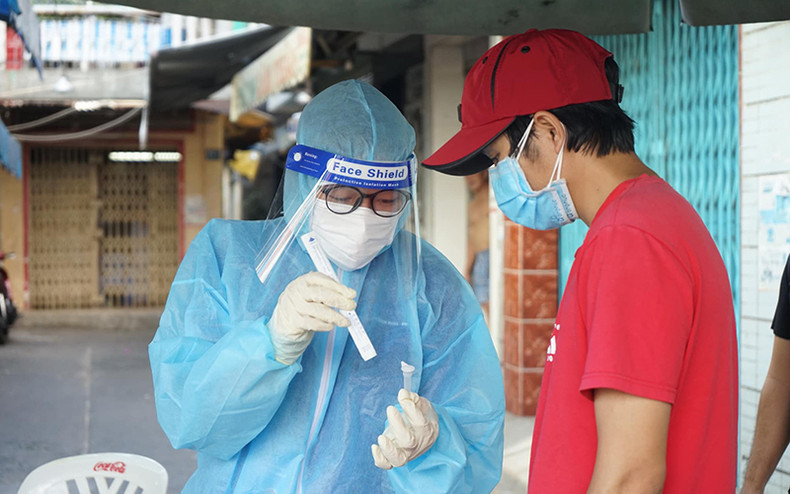
A medical worker gives instruction on how to do a quick COVID-19 test at home. (Photo: Ministry of Health)
Son said that the MOH has developed a very detailed plan with the Department of Health of HCM City regarding this content. The mass testing began right on August 22 and the ministry of Health has been cooperating with the city's medical forces in the work, as well as guiding people to take samples for rapid testing at home.
The city has prepared 5 million rapid test kits, while RT-PCR testing systems have secured about 30,000 samples. Ten more mobile testing vehicles from the MOH have been deployed in the city.
Facing the complicated developments of the epidemic in Vinh City, the capital of Nghe An Province, the Steering Committee for COVID-19 Prevention and Control of Nghe An has decided to increase social distancing order for Vinh City to one level higher than that set in Directive 16, which requires local people not to leave their homes. The immediate implementation period will last for seven days, starting from 0:00 on August 23.
During this time, the Nghe An Department of Health will mobilise about 1,000 health workers to assist Vinh City in taking samples for free testing for 500,000 people, while ensuring effective COVID-19 vaccination.
Local authorities have pledged to ensure adequate supply of food and necessities to each home in the city, with free items given to disadvantaged people, policy beneficiary families, people with meritorious services, and disadvantaged groups.
